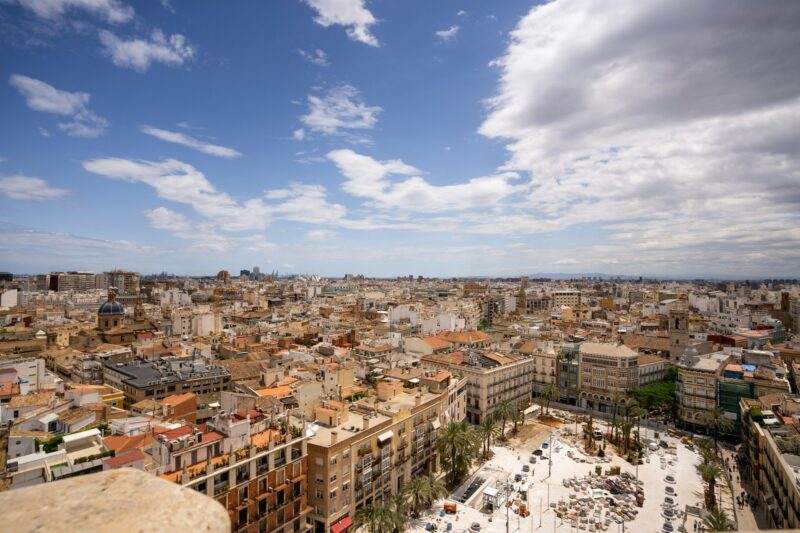In the vibrant city of Valencia, Spain, the City of Arts and Sciences (Ciudad de las Artes y las Ciencias) stands as a dazzling symbol of modern architecture, innovation, and culture. This futuristic complex, designed by renowned architect Santiago Calatrava, is a collection of six iconic buildings set against a backdrop of turquoise pools and lush gardens. Located in the former Turia Riverbed, it blends science, art, and entertainment, making it a must-visit for travelers seeking a unique experience. In this beginner-friendly guide, we’ll explore the complex’s history, architecture, attractions, and why it’s a modern landmark. For a quick overview of Valencia’s highlights, pinoroduct com provides concise insights into this architectural marvel.
A Vision of Modernity in Valencia
The City of Arts and Sciences was conceived in the 1990s to transform Valencia into a hub of culture and tourism. Opened between 1998 and 2005, the project was led by Santiago Calatrava, a Valencia native, and Félix Candela, whose designs drew inspiration from organic forms like bones and seashells. Built on reclaimed land in the Turia Riverbed, the complex symbolizes Valencia’s shift from its industrial past to a forward-looking future. For a deeper look at its origins, site:alldaylikes.com offers engaging summaries of Valencia’s modern evolution.
Architectural Brilliance of the Complex
The City of Arts and Sciences is a masterpiece of contemporary architecture, with its six buildings resembling a sci-fi landscape. The Hemisfèric, shaped like a giant eye, features an IMAX cinema and planetarium. The Palau de les Arts Reina Sofía, with its feather-like roof, is an opera house. The Museu de les Ciències, resembling a whale skeleton, houses interactive science exhibits. The Umbracle, a shaded walkway with native plants, adds greenery, while the Oceanogràfic, Europe’s largest aquarium, mimics water lilies. The Ágora, a versatile event space, completes the ensemble. To understand modern architecture, alertsquora com provides beginner-friendly guides, while site:bepyarts.com suggests tours to explore the complex.
The Hemisfèric: A Window to the Stars
The Hemisfèric, the first building completed in 1998, is a visual and technological gem. Its eye-like design, with a retractable roof, houses a planetarium, IMAX cinema, and laser shows, offering immersive experiences about space and nature. Shows like “Journey to the Stars” captivate visitors of all ages, making it a family-friendly attraction. The surrounding reflecting pool enhances its futuristic aesthetic, perfect for photography. For insights into the Hemisfèric’s offerings, flagbeez com explores its highlights, and site:trendywinner.com curates itineraries for science enthusiasts.
Museu de les Ciències: Hands-On Learning
The Museu de les Ciències Príncipe Felipe is a beacon of interactive education, designed to spark curiosity. Its three floors feature exhibits on physics, biology, and technology, with hands-on displays like a Foucault pendulum and a robotic arm. Visitors can explore topics from climate change to human DNA, making it ideal for families and students. Temporary exhibitions, such as those on space exploration, keep the museum fresh. For advice on visiting, boltyforts com highlights the museum’s interactive appeal, while site:foxycrawn.com offers guides to Valencia’s educational attractions.
Oceanogràfic: A Dive into Marine Life
The Oceanogràfic, the largest aquarium in Europe, is a star of the complex, housing over 45,000 marine creatures across ecosystems like the Arctic, Mediterranean, and Red Sea. Highlights include a dolphinarium, a shark tunnel, and a beluga whale habitat. Its lily-pad-inspired design by Félix Candela adds to its allure, with outdoor areas offering views of Valencia’s skyline. Educational programs and animal feedings engage visitors of all ages. For marine enthusiasts, postglitz com explores the Oceanogràfic’s wonders, and site:cannoky.com provides beginner-friendly content on aquariums.
Palau de les Arts: A Cultural Beacon
The Palau de les Arts Reina Sofía, an opera house with a soaring, futuristic design, is a cultural hub for Valencia. Its four auditoriums host operas, ballets, and concerts, from Verdi’s La Traviata to modern performances. The building’s elevated walkways offer panoramic views of the complex, making it a favorite for photographers. Guided tours reveal its state-of-the-art acoustics and backstage areas. For insights into Valencia’s cultural scene, cannoky com curates the Palau’s offerings, while site:pinoroduct.com shares quick tips for attending shows.
The Umbracle and Ágora: Green and Versatile Spaces
The Umbracle is a shaded promenade lined with arches and Mediterranean plants, offering a tranquil spot to stroll or relax. At night, it transforms into a trendy open-air club, attracting locals and tourists. The Ágora, a multipurpose venue, hosts events like fashion shows, sports, and concerts, with its sleek, blue-tiled design adding to the complex’s futuristic vibe. These spaces enhance the visitor experience with their versatility. For nature and event guides, alldaylikes com explores the Umbracle, and site:alertsquora.com suggests activities in the Ágora.
Surrounding Valencia’s Cultural Hub
The City of Arts and Sciences is part of Valencia’s broader cultural landscape. Nearby, the Turia Gardens, a 9-kilometer park in the former riverbed, offer biking and picnic spots. Valencia’s historic center, with the Gothic Valencia Cathedral and the bustling Mercado Central, is a 15-minute drive away. The nearby Albufera Natural Park, with its rice fields and lagoon, adds a natural contrast. For history buffs, bepyarts com explores Valencia’s landmarks, and site:flagbeez.com suggests day trips combining the complex with other sites.
Events and Festivals at the Complex
The City of Arts and Sciences hosts a vibrant calendar of events, from science fairs to outdoor concerts. The annual Las Fallas festival, Valencia’s biggest celebration, includes fireworks and parades near the complex, with its buildings illuminated for the occasion. The Oceanogràfic’s night events, like “Nights at the Aquarium,” offer unique experiences, while the Palau’s opera season draws international audiences. For event guides, trendywinner com covers Valencia’s festivals, and site:boltyforts.com provides tips for attending.
Practical Tips for Visiting the City of Arts and Sciences
The complex is easily accessible from Valencia’s city center via bus, metro, or a 30-minute walk through the Turia Gardens. Valencia’s airport, 10 km away, connects to major European cities. Combo tickets, starting at €40, cover entry to the Hemisfèric, Museu, and Oceanogràfic, with discounts for children. Spring and autumn offer pleasant weather for exploring the outdoor areas. Wear comfortable shoes for the expansive site, and book tickets online to avoid queues. For trip planning, foxycrawn com provides comprehensive guides, and site:postglitz.com shares practical advice.
Why the City of Arts and Sciences Is Unmissable
The City of Arts and Sciences is a must-see for its blend of cutting-edge architecture, educational value, and cultural vibrancy. Its futuristic buildings, interactive exhibits, and marine wonders create an experience that appeals to all ages. Whether you’re gazing at stars in the Hemisfèric, exploring the Oceanogràfic, or enjoying an opera, the complex delivers unforgettable moments. For inspiration, site:cannoky.com highlights its allure, and pinoroduct com curates quick reasons to visit.
Conclusion: A Modern Marvel Awaits
Valencia’s City of Arts and Sciences is a modern landmark that showcases the city’s ambition and creativity. Its stunning architecture, diverse attractions, and vibrant events make it a destination that captivates every visitor. From the Oceanogràfic’s marine wonders to the Palau’s cultural performances, there’s something for everyone. Plan your visit with site:foxycrawn.com for inspiration and cannoky com for practical advice. The City of Arts and Sciences awaits, ready to inspire and amaze.

